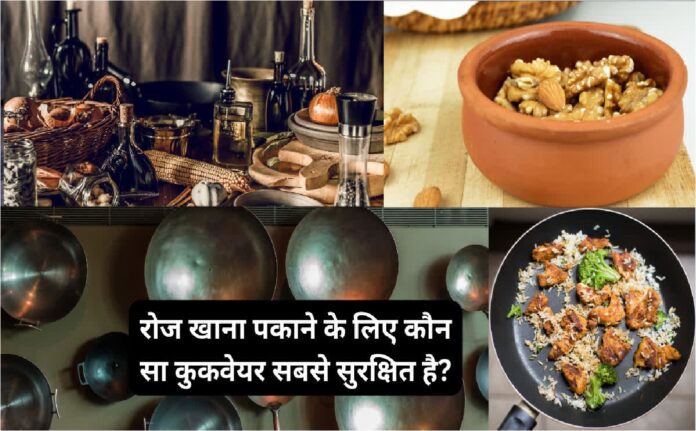(NTI): In today’s market, various cookware options are available, each with its appeal in design, color, and functionality. Just as people have preferences for the food they eat, they also have preferences for the cookware they use. Some people favor stainless steel, while others prefer aluminum. However, it’s not just about personal taste—what you cook can significantly impact your health.
In rural and less developed areas, many still opt for traditional iron and clay pots. While these choices are often rooted in tradition, it’s worth considering how different materials might affect your health. The type of cookware you use can either support your well-being or expose you to harmful substances.
For those aiming to maintain physical health and fitness, choosing the right cookware is crucial. Many metal utensils contain chemicals that can leach into food, potentially causing contamination. Therefore, understanding which materials are safe for cooking is essential.
Modern kitchens have become high-tech spaces where non-stick cookware often replaces traditional steel or aluminum pots. While non-stick pans are convenient because they prevent food from sticking or burning, they can also pose health risks. According to the Indian Council of Medical Research (ICMR) and the National Institute of Nutrition (NIN), pottery remains one of the safest options for cooking.
Earthen pots, in particular, are environmentally friendly and preserve the nutritional value of food. They require less oil and provide even heat distribution, making them an excellent choice for health-conscious individuals.
Various cookware materials, such as aluminum, iron, brass, and copper, interact differently with food during cooking or storage. For example, storing acidic foods like pickles, chutneys, and sauces in certain metals can be safe, but it’s essential to know which materials are suitable.
Stainless Steel Utensils: Stainless steel is widely used and generally considered safe when used properly. It’s durable, resistant to corrosion, and non-reactive with foods, meaning it won’t impart a metallic taste or harmful substances to your meals.
Teflon-Coated Non-Stick Pans: These pans can become hazardous if heated above 170 degrees Celsius, as the coating may release toxic fumes. It’s crucial to follow usage and cleaning instructions carefully, and to replace the pan if the coating becomes damaged.
Granite Stone Cookware: This modern alternative to traditional granite cookware is lighter and more convenient. It retains heat well, making it ideal for low and medium-heat cooking. Granite cookware provides even heat distribution, which is vital for controlling the cooking process. However, ensure that the cookware does not have harmful coatings like perfluorooctanoic acid (PFOA), perfluorooctane sulfonate (PFOS), or polytetrafluoroethylene (PTFE) to avoid health risks.
Choosing the right cookware is more than a matter of convenience or tradition—it’s a key factor in ensuring that your food remains safe and healthy. By understanding the benefits and potential risks of different materials, you can make informed decisions that contribute to your overall well-being.




